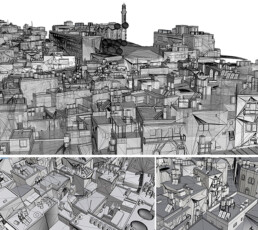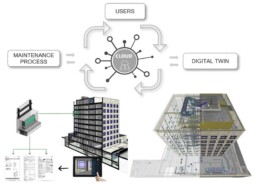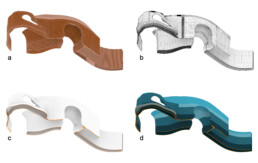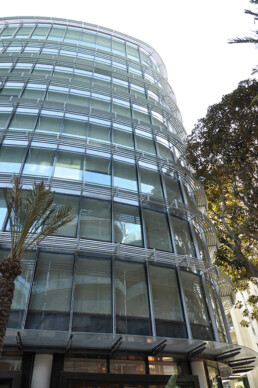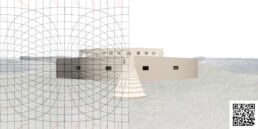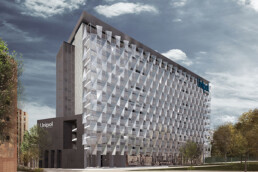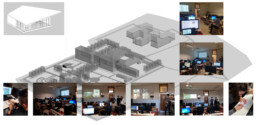Reviewer 2020
REVIEWER 2020
Massimo Babudri, Ordine degli Ingegneri di Roma (Italy)
Carlo Bianchini, Sapienza Università di Roma (Italy)
Fabio Bianconi, Università di Perugia (Italy)
Cecilia Maria Bolognesi, Politecnico di Milano (Italy)
Stefano Brusaporci, Università dell’Aquila (Italy)
Adriana Caldarone, Sapienza Università di Roma (Italy)
Michele Calvano, CNR – ISPC (Italy)
Marco Capobianchi, Ordine degli Architetti P.P.C. di Roma e Provincia (Italy)
Maria Grazia Cianci, Università Roma Tre (Italy)
Roberto de Rubertis, XY Digitale (Italy)
Tommaso Empler, Sapienza Università di Roma (Italy)
Marco Filippucci, Università di Perugia (Italy)
Donatella Fiorani, Sapienza Università di Roma (Italy)
Elena Gigliarelli, CNR – ISPC (Italy)
Elena Ippoliti, Sapienza Università di Roma (Italy)
Massimiliano Lo Turco, Politecnico di Torino (Italy)
Giovanna Massari, Università di Trento (Italy)
Anna Osello, Politecnico di Torino (Italy)
Ivan Paduano, Sapienza Università di Roma (Italy)
Leonardo Paris, Sapienza Università di Roma (Italy)
Sandro Parrinello, Università di Pavia (Italy)
Fabio Quici, Sapienza Università di Roma (Italy)
Alberto Raimondi, Università Roma Tre (Italy)
Manuel Ròdenas, UPCT Universidad Politécnica de Cartagena (Spain)
Maria Laura Rossi, Sapienza Università di Roma (Italy)
Michela Rossi, Politecnico di Milano (Italy)
Francesco Ruperto, Sapienza Università di Roma (Italy)
Livio Sacchi, Università degli Studi “G. d’Annunzio” di Chieti – Pescara (Italy)
Mario Sacco, BIM Expert (Italy)
Cettina Santagati, Università di Catania (Italy)
Alberto Sdegno, Università degli studi di Udine (Italy)
Graziano Mario Valenti, Sapienza Università di Roma (Italy)
Valeria Zacchei, PhD BIM Expert (Italy)
Editorial Vol. 06
N. 6 of the magazine is a special issue, for all those who have worked for its organization, management and dissemination.
In fact, on 7th April 2020, ANVUR announces that Dn. Building Information Modeling, Data & Semantics is recognized as a scientific journal:
Application evaluation outcome for the DN journal
Dear editor,
as required by art. 4 of Annex D of Ministerial Decree 120/2016 (Decree of Criteria and Parameters for National Scientific Qualification) ANVUR has concluded the preliminary phase relating to the evaluation of your application for the purposes of classification of the journal.
To this end, ANVUR made use of the opinion of qualified experts in the respective scientific sectors for examination of the classification revision requests presented through the specific CINECA interface by 23rd June 2019 according to methods and criteria set out in ANVUR Regulation for the classification of journals in non-bibliometric Areas, approved with the Governing Council Resolution no. 42 of 20/2/2019.
We therefore inform you that, on the basis of the preliminary assessment carried out, the application you submitted is accepted with the following reasons:
Area: 08
recognized scientificity
Last lines, in particular, are those that make us understand how the group that strongly wanted the foundation of the magazine (composed of: Cecilia Maria Bolognesi, Tommaso Empler, Laura Inzerillo, Massimiliano Lo Turco, Sandro Parrinello, Francesco Ruperto, Cettina Santagati , Graziano Mario Valenti) and believed in its potential, saw in the right direction and was able to stimulate the scientific community to propose contributions of interest and recognized quality. But as always happens, success is never for the individual, but for the whole team, from the publisher who believed in the initiative (Dei – Tipografia del Genio Civile, in the people of Giuseppe Rufo and Clorinda Protti), to those who work of drafting, visual and editing (in particular Alexandra Fusinetti).
However, last two lines are also a warning to continue, to improve, the spur to stay focused on the goal that the magazine has set itself since its inception:
Building Information Modeling (BIM), along with UNI 2017 standards and operative recommendations by BIM Handbook, has been recognized as the key information tool for digitalization in the building field.
The magazine Dn represents a unique experience at national level. It addresses specific themes through an unprecedented analytical approach. It presents a varied selection of methods, technologies and instruments clearly defined to “build right and allow people to live”.
Magazine content is quite diversified. It presents exploratory approaches in the field of H-BIM, aimed at a correct digitization of historical heritage, and a number of virtuous examples of good practices for the implementation of major building interventions, characterized by marked process innovations, a description of operational proposals and related applications in the managing and maintenance area.
N. 6 of the magazine opens a new season, the one where it is necessary to be deserving of the scientific recognition just received and this happening in the post Covid-19 period whose legacy finally seems to be a clearance of issues related to digital as well as to green and research.
For this reason, selected papers are deliberately heterogeneous, to show the magazine’s potential to range between apparently distant topics, but where the inherent contents of the words “Building Information Modeling, Data & Semantics” are well present and recognizable within a digital transformation of practices of disciplines that move around the built environment.
Paradigms vary, as the almost infinite so-called “Uses of BIM” change, ranging between Modeling and Management, between the contribution and interest of representation discipline to the theme of BIM and HBIM (Francesca Fatta), to the definition of new AECO sector rules, for both teaching and assessment, considering the importance of new management parameters and focusing attention on “digital value” of education sector (Fonsati, Del Giudice, Zanor).
From how digitization is faced in the design and building processes of bespoke architectural envelopes, built internationally, in markets that are also very different from each other, with the point of view of a BIM Manager (Christian Florian), to the use of software parameters for executive design of complex facades to structure project reality and develop communication tools for production and construction phases, according to an adequate representation of the complexity of the contents (Vescovi), up to the importance of relationship between complex form and realization efficiency in the light of remarkable development of digital manufacturing techniques, where algorithmic modeling takes on a central role as it can satisfy both aesthetic and production needs (Calvano, Mancini).
From verification and validation procedures of highly complex BIM oriented projects, through description of operational strategies that allow to control and preserve the quality of graphical-alphanumeric attributes that can be reused even during the life cycle of the product (Lo Turco, Tomalini), to GIM protocol, as an approach for maintenance management, through creation of a digital twin interconnected to existing building (Di Ciaccio, Rossini, Maroder).
Three-dimensional modeling, aimed at the representation of urban contexts, closely linked to theme of communicating information inherent to constructive, typological and technological characteristics of historic city (Parrinello, De Marco, Galasso).
Finally, use of virtual reality for autism shows a potential for inclusion and communication with the aim of obtaining a communication tool useful for all (Pecora).
Therefore, n.6 of the magazine also confirms the vocation of Dn to propose itself as a privileged observatory of a transition to digital, whose contours and areas of reference are all to be explored and where traditional disciplinary sectors are different, from architecture to engineering, from information technology to project management, tend to mix in a common search for the extraction of “Value” (economic, cultural, environmental, etc.) from “Data”.
Tommaso Empler, Francesco Ruperto
Index Volume 6
INDEX
Editorial
Tommaso Empler, Francesco Ruperto
BIM e H-BIM. La rappresentazione del modello tra sperimentazione e formazione
Francesca Fatta
Still talking about BIM. Reflections drawn from experiences working on bespoke facades projects
Christian Florian
Bim level of education: a possible approach
Arianna Fonsati, Matteo del Giudice, Loris Zanor
Validation processes for large BIM projects. The case of the De Castillia 23 building
Massimiliano Lo Turco, Andrea Tomalini
An urban modeling protocol through catalogues and technological modules.
From digital survey to the 3D information system for the historic center of Bethlehem.
Sandro Parrinello, Raffaella De Marco, Francesca Galasso
Virtual Reality for autism: a new proposal of visual frameworks for communication of the heritage and inclusion
Anna Lisa Pecora
Future façades: parametric methodologies for the executive design
Paola Vescovi
Massive wood design – From complex shape to efficient construction
Michele Calvano, Matteo Flavio Mancini
From sheets to models: innovative approaches for the facility and maintenance management
Damiano Di Ciaccio, Francesco Livio Rossini, Edoardo Maroder
From sheets to models: innovative approaches for the facility and maintenance management
ABSTRACT
The di.FM (Digital for Facility Management) protocol is an innovative approach for maintenance management, through the creation of a digital twin interconnected to the existing building. The goal is to create a BIM model that is constantly updated on the state of the building, therefore capable of collecting related information and monitoring the state of use of the elements and components present.
Damiano Di Ciaccio, Edoardo Maroder,Partner at Rilo Digital Planning;
Francesco Livio Rossini, PhD architect.
e-mail: d.diciaccio@rilodp.it ; francesco.rossini@uniroma1.it ; e.maroder@rilodp.it
Massive wood design – From complex shape to efficient construction
ABSTRACT
The relationship between complex form and manufacturing efficiency is increasingly important in light of the remarkable development of digital manufacturing techniques. Algorithmic modelling has assumed a central role as it is able to satisfy both aesthetic and production needs.
Michele Calvano, Consiglio Nazionale delle Ricerche - Istituto di Scienze del Patrimonio Culturale;
Matteo Flavio Mancini, Università degli Studi di Roma Tre – Dipartimento di Architettura;
e-mail: michele.calvano@ispc.cnr.it; matteoflavio.mancini@uniroma3.it
Future façades: parametric methodologies for the executive design
ABSTRACT
The application of parametric software for the executive design of future façades is oriented to structure the project reality and develop communication tools for the production and construction phases, according to an adequate representation of the complexity of contents.
Paola Vescovi
Politecnico di Milano, Material Balance Research + Engineering, Dipartimento di architettura, ingegneria delle costruzioni e ambiente costruito
e-mail: paola.vescovi@mail.polimi.it
Virtual Reality for autism: a new proposal of visual frameworks for communication of the heritage and inclusion
ABSTRACT
Some positive results in experience using VR for Autism show potential for inclusion and communication with the aim to achieve a communicative instrument useful for all. Compared to the previous researches this study focuses on the human answers to technology finding new design guidelines for an autism friendly VR.
Anna Lisa Pecora
Università di Napoli Federico II
e-mail: annalisa.pecora@unina.it
An urban modeling protocol through catalogues and technological modules. From digital survey to the 3D information system for the historic center of Bethlehem.
ABSTRACT
The three-dimensional modelling, aimed at the representation of urban contexts, is closely linked to the theme of communicating information related to the constructive, typological and technological characteristics of the historic city. In particular, the definition of methodological protocols for the creation of extended 3D models is at the center of the research developed in Bethlehem by DAda-LAB Didactics and Research Laboratory of University of Pavia.
Sandro Parrinello, Raffaella De Marco, Francesca Galasso
DICAr, Dipartimento di Ingegneria Civile e Architettura, Università degli Studi di Pavia.
e-mail: sandro.parrinello@unipv.it, raffaella.demarco@unipv.it, francesca.galasso@unipv.it
Validation processes for large BIM projects. The case of the De Castillia 23 building
ABSTRACT
The analysis of an exemplary case study is the pretext to critically examine the validation procedures of BIM- oriented projects of considerable complexity, through the description of operational strategies that allow to control and preserve the quality of reusable graphic-alphanumeric attributes even during the life cycle of the product.
Massimiliano Lo Turco, Andrea Tomalini
Politecnico di Torino, Dipartimento di Architettura e Design
e-mail: massimiliano.loturco@polito.it, andrea.tomalini@polito.it
Bim level of education: a possible aproach
ABSTRACT
The current situation of AECO sector is challenging Universities in bridging the gap between skills required from the market and current qualified capabilities of young professionals. The real innovation is in the definition of new rules both for teaching and evaluating, considering the importance of new evaluation criteria and focusing on the digital value of education.
Christian Florian, BIM Manager di Permasteelisa S.p.A.
e-mail: c.florian@permasteelisagroup.com

